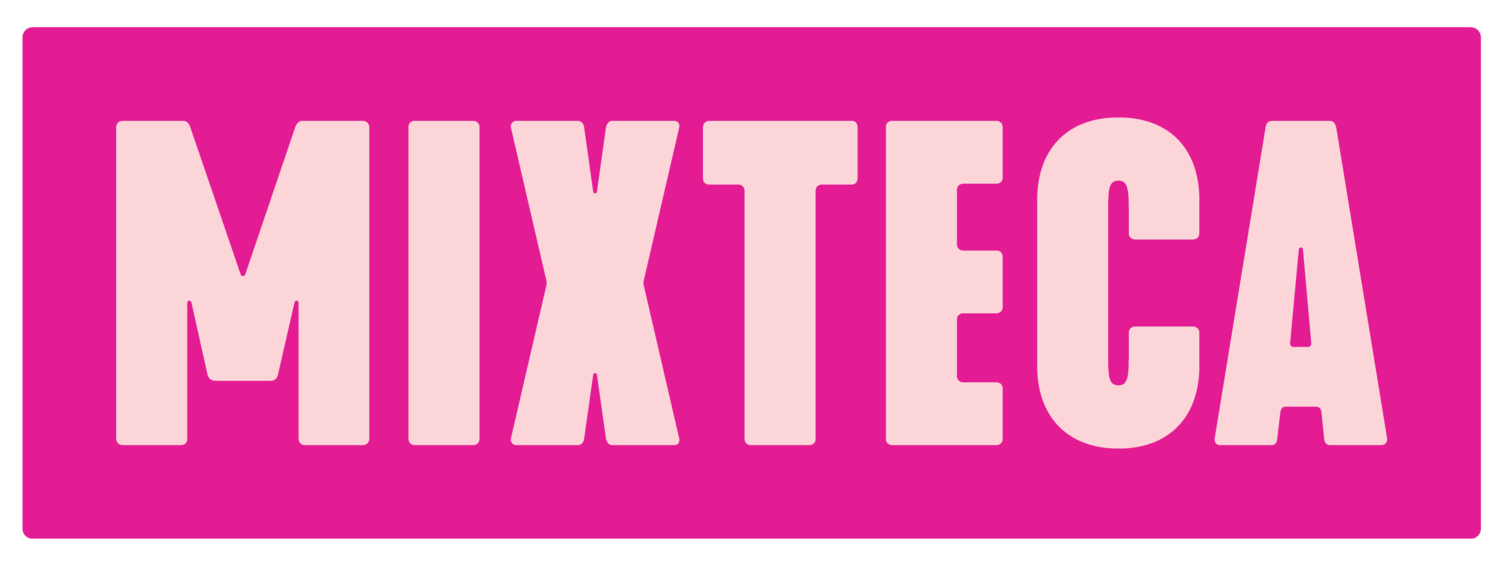OUR HISTORY
To write about the birth of Mixteca Organization, Inc. is to place ourselves within the story of HIV/AIDS in the United States. In the mid-1990s distribution of information about AIDS was on the rise in developed nations such as the United States, but in immigrant communities—particularly Hispanic ones—levels of HIV/AIDS infection and general ignorance of the disease was still high. The City Of New York, coincidentally, was one of the locations with the highest number of Hispanics infected with HIV/AIDS. In 1991 Dr. Gabriel Rincón bears witness to the lack of information available in Spanish and decides to take action by organizing talks about HIV/AIDS, its risks, forms of prevention, and treatments.

WHY A COMMUNITY ORGANIZATION?
In 1996 the crusade continued to intensify. Dr. Gabriel Rincón, with the help of Ruddy Rincón, designs a slide presentation about HIV infection and prevention. With the use of a portable projector and informational pamphlets, he gathers groups of Mexican immigrants and recently-arrived Hispanics in factories, churches, houses, and community centers, giving an average of 10 talks per month.
In 2000, together with Facundo Méndez and Alejandra Rodríguez, he decides to formalize this activity and obtains official status for Mixteca Organization, Inc. A non-governmental, non-profit community center makes the work more efficient and achieves the greatest impact in the Mexican immigrant community in Brooklyn. Later on, Leonel Garcia along with Margarita Rincón join the board rounding out the directive body of the group that, in the span of a decade, has grown to provide free health and education programs. The mission that guides this force is the elimination of cultural, social, and economic barriers that hinder the advancement of the community. Mixteca Organization, Inc. is, furthermore, a meeting place for people of very different origins who are looking to create a community where thousands of Latino families can find support, information, and the resources that permit them to progress and adapt in this city. In 2004 the arrival of Javier Amigón is decisive in completing various projects that were crucial to the objectives of the organization. Five years later the board was enlivened by the addition of Dr. Dolores Martínez and Antonio Martínez.
FIRST ADVANCES
The first headquarters of Mixteca Organization, Inc. is the basement of Dr. Rincón’s office. From there a successful fundraising campaign is launched which permits the first bi-national project for the construction of a system of potable water in Chiautla de Tapia, Puebla. Also in 2000 Dr. Rincón formally gives the first talks about HIV/AIDS and other health topics from Mixteca Organization, Inc. In 2002, thanks to the generous support of Molly McKnee, Mixteca was able to obtain its first funding from the MHRA New York, which permitted the organization to unite its projects under one mission:
“To empower the Mexican and Latin-American immigrants of the New York area by providing access to services that enhance immigrants’ quality of life that will allow them to reach sustainable social and economic development. We offer a variety of programs and services that respond to the specific needs of recently arrived immigrant families and aim to build a supportive environment for the growing Mexican and Latin-American immigrant community.”
From this moment on Mixteca organizes cultural events to unite the community including: extending relations with two key churches in the area—All Saints Church and Saint John the Evangelist—where Dr. Rincón gives talks and health workshops; begins what will be a long and fruitful partnership with Lutheran Family Health Care Center and Hispanic AIDS Forum; and where Dr. Rincón becomes certified by the New York City Department of Health to administer HIV oral exams and give private and confidential counseling. That same year a project to carry out development projects in the Mexican state of Puebla becomes a reality as well. Comité La Noria Hidalgo Tehuitzingo de Puebla, along with the support of Mixteca Organization, Inc., begins a fundraising campaign to construct a 12-kilometer highway that was inaugurated in 2008.
In 2003 the demand for health education continues to grow and Mixteca Organization, Inc. takes it upon itself to reach more members of the community by helping them find low-cost healthcare. Mixteca Organization carries out fundraising events in support of the Casa de Ángeles center for disabled people in Puebla. Also, that same year, Mixteca acting as an intermediary, donates medical and dental materials from Henry Schein, Inc. to the Hudson Valley Health Care Center. This brings about the beginning of another great friendship this time with Saint Rocco’s Church. From this moment on Saint Rocco’s Church will be an important ally for our health programs and fundraisers. This unification process would not have been possible without the technical assistance of Adriana Rocha (Community Resource Exchange), whose efforts helped Mixteca receive the support of the Union Square Awards in 2004. Mixteca also offered support to the Comité Santa Ana Tecolapa in the 3 X 1 program to pave a highway that connects the town with the main road from Chiautla to Matamoros.
A COMMUNITY CENTER IS BORN IN SOUTH BROOKLYN
In 2004, Mixteca Organization, Inc. moves to its new headquarters to 723 5th Avenue in Brooklyn. It is there that Mixteca Organization opens a community center with a set schedule to carry out its mission in a more conventional manner. English classes and computer classes in a second-hand computer lab were established. Students from the Teachers College of Columbia University carried out a needs assessment. That year marked the beginning of the organization’s participation in AIDS Walk New York. During this time of growth and achievement the organization attracted the attention of councilwoman Sara González and Brooklyn Borough President Marty Markowitz and with them Mixteca Organization, Inc. was able to hold community workshops about labor rights and immigration.
A NEW HOUSE WITH A WIDENED SCOPE
In 2005 the community center moved to a bigger space (245 23rd St. 2nd floor) where the programs and health workshops were able to accommodate more people; the organization was able to increase by 200%. The demand required a second health promoter, and, at the end of the year, a full-time Executive Director. The content of the community talks diversified. The president of the organization, Dr. Gabriel Rincón, receives the Local Hero Award from Bank of America.
In 2006, the Instituto Tecnológico y de Estudios Superiores in Monterrey signed an agreement with Mixteca to offer basic computer skills classes on-line. From this moment on students were able to receive an official certificate and professional instruction that accredits their studies. The Secretary of Public Education in México established with Mixteca Organization, Inc. a community plaza to implement the program of the National Counsel for Culture and Labor. Literacy and basic education classes began being offered to many Mexicans who were unable to obtain access to adequate education in their native states. The ESOL (English for Speakers of Other Languages) program was formalized with the incorporation of a new curriculum and the support of NYU students who currently teach the classes.
In 2007, our health programs take great strides. The New York City Department of Health certifies Mixteca Organization, Inc. to open a Limited Service Laboratory in order to conduct HIV rapid oral tests as well as referrals to low-cost health and legal services. To conduct health fairs the Organization counts on the support of the Church of Saint Thomas Aquinas, Saint Rocco’s Church and All Saints Church. Bellevue Hospital and Long Island College Hospital also began to admit referrals from Mixteca Organization, Inc.
In 2008, the General Consul of Mexico in New York implemented a new program, Consulate on Wheels, with the purpose of facilitating access to passport and consular services for Mexican immigrants. Since the beginning of this initiative Mixteca Organization, has gladly collaborated, offering its community center to the Consulate on multiple occasions to help expand its service. That first year, at the Center alone, more than 10,000 Mexicans obtained documents and identification, and more than 20,000 people sought information. The Consulate has always been an important ally and has always been present at the Organization’s most important moments.
After 10 years Mixteca Organization, Inc. continues to carry out projects of 1 X 1 and 3 X 1 with Mexico, especially with the Mixteca region, where the Centro Comunitario de Santa Ana Tecolapa was inaugurated.
2008 is also a year of enormous advances including: The Mixteca Marty Markowitz Learning Center. It is a lab equipped with 37 computers, a projector, and a scanner, and all of this was made possible with the support of the office of Brooklyn Borough President Marty Markowitz. That same summer the City University of New York (Brooklyn College) implemented a program for college preparation named College Now! which is currently offered at our community center.
Our basic education programs for adults and basic computer skills classes celebrated with great pride their first graduating class of 52 students.
With culture being fundamental in its development, Mixteca Organization, launched the folkloric ballet for children, which has performed at various community celebrations.
In 2009 Mixteca Organization, Inc. made small cutbacks in its budget in order to not sacrifice any of its programs or services. It made the best of its resources and focused on a process of self-evaluation and reflection that will carry the Organization to its next stage. That year it celebrated the first gala fundraiser and with it initiated a new opening to widen the network, associations, and options. This summer a new collaboration was formed, the Cornell University Cooperative Extension, which has provided healthy eating habits and cooking and nutrition classes for adults and children.
As in previous years, members of the Board of Directors carried out 3 X 1 projects, among them the multi-purpose room in Chauzumba, and other works in different towns in the state of Puebla: Santa Ana Tecolapa, Chiautla y Tlancualpican.
In September the center had the honor of receiving the first lady of Mexico, Margarita Zavala de Calderón, who wanted to achieve a better understanding of how the Organization and its programs functioned. She heard the comments of students in various courses, and initiated a dialog with Dr. Rincón to explore, as embassador Rubén Beltrán declares “the possibility of duplicating the Mixteca model in other urban areas of the United States.”
The year 2010 opened with the annual graduation of students from the Adult Literacy and Basic Education, Basic Computer Skills, and College Now! programs. A total of 76 students received an official certificate from the Secretary of Public Education in Mexico, Institutuo Tecnológico y de Estudios Superiores de Monterry and the City University of New York, respectively. This year is marked to improving the services that are offered through a profound process of self-evaluation and consolidating the organization’s presence among community centers based in the United States.
SUBSCRIBE TO OUR NEWSLETTER
Sign up with your email address to receive news and updates.

